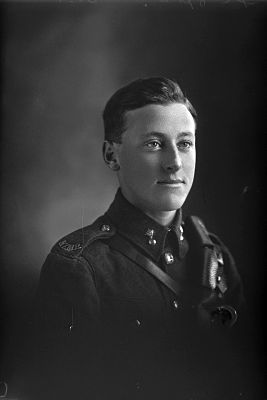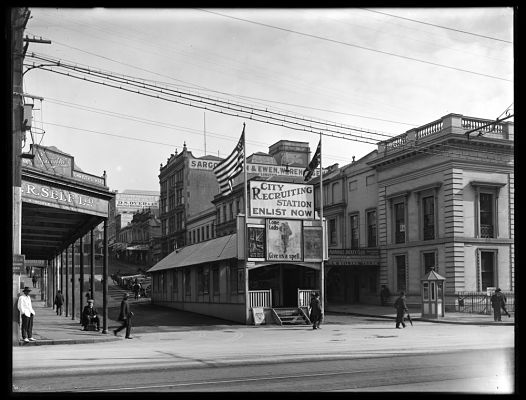WW1 Frederick Charles Spratt
Frederick Charles Spratt was part of the 2nd New Zealand Cyclists Corps which carried out much of the preparation work for the Battle of Messines on the Western Front in 1917.
Frederick Charles Spratt was born on 22 May 1895 and attended Remuera Primary School. He had been working as a warehouseman for Sargood Son and Ewen in Victoria St in Auckland City when he attested on the 12th January 1916 for war service and gave his address as his mother Emma Spratt’s – 26 Grange Road, Mount Eden, Auckland. There was a Recruiting Station right next to the Sargood’s building.
He joined the Auckland Squadron of the Auckland Mounted Rifles as part of the 12th Reinforcements but transferred to the New Zealand Cyclists Corp on 4 April 1916. The officers and men of this Company were found from the Mounted Rifles reinforcements training at that time in Featherston Camp, who, having more men than were necessary for immediate requirements, voluntarily transferred to this new Cyclist Company. Major C. Hellier Evans, who was in command of A Squadron, 13th Mounted Rifles, was offered and accepted the command of the Company. Fred left New Zealand for Egypt on 6 May 1916 on the S.S. Mokoia from Wellington.
They arrived at Suez on the 21st June, 1916 where the Company was broken into two units. After two weeks of training the unit departed from Alexandria on the S.S. Tunisian and arrived at Marseilles in the south of France on 17th July 1916. In September he was at Rouen in France with the – 2nd ANZAC Corp Cyclists Battalion, attached to Headquarters as an escort to the General Office in Command Lieut.-Colonel C. H. Evans, D.S.O.
The unit then moved north through France to Fleurbaix where they were to support holding the front line. Their permanent place was at Doulieu, North France. On the 1st April the Unit was ordered to proceed to Regina Camp near Ploegsteert and to be attached to the N.Z. Working Battalion for work on Cable Burying under A. D. Signals 2nd Anzac Corps. The work was called “The Corps Buried System of Communications” and consisted of burying cable containing telephone wires in a trench 6, 7 and 8 feet deep. When it was finished on 19th May the total length of trench, excavated to a depth of 7 feet and over, by and under the supervision of the Battalion was over 56 miles, and as the average number of wires laid was over 50 pairs, the total length of wire works out at about 5,600 miles. Battle of Messines
“On the morning of 7th June, at 2 15 a.m., the parties left their billets near Steenwerck and cycled to White Gates on Hill 63, a distance of 7 or 8 miles. On the way up, when near Romarin, enemy gas was encountered and gas masks had to be put on. Further on, higher ground was reached, where the gas was less oppressive. On reaching our rendezvous everything was dead still, not a gun had been heard for an hour or so, when suddenly a huge 12in. gun in the rear was fired, at which signal 19 mines along the whole army front were exploded; thus at 3.10, zero hour, the Battle of Messines was heralded.”
Frederick received a wounded arm on 7 June 1917 and was admitted to the Canadian 3rd General Hospital at Boulogne from 8-15 June 1917. On 29 June 1917 he was transferred to Hospital Ship Jan Breydel to England. He was admitted to the No 2 N Z General Hospital Mount Felix at Walton-On-Thames on 4th July 1917 with a severe shrapnel wound to his right arm and chest. On the 11th July Fred was classified as unfit for service and placed on the NZ Roll. On 14 July Fred embarked on the hospital ship Marama from Avonmouth, having been discharged as no longer fit for service due to wounds received in action. He arrived in New Zealand on 17 October 1917. Frederick died in Campbells Bay Auckland on 3 February 1965. He is remembered on the memorial gates of Remuera Primary School.




